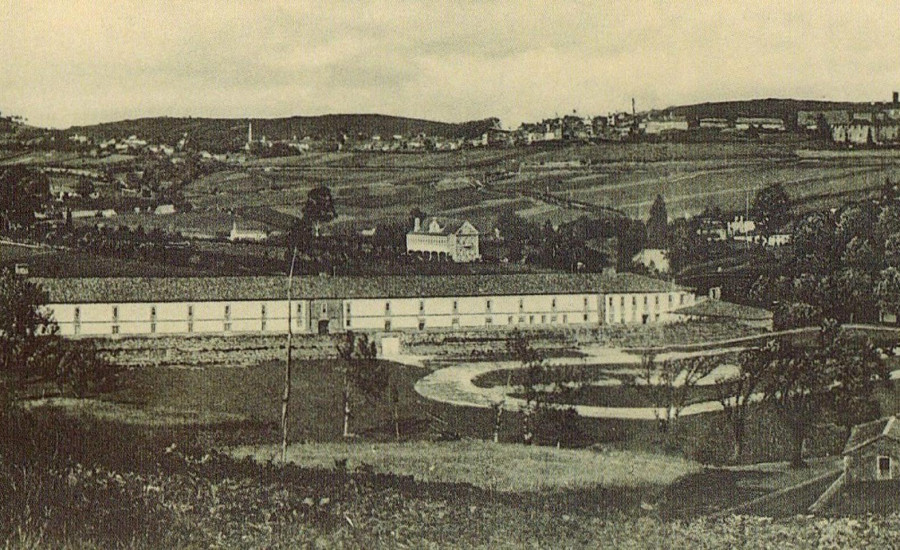The Prison of the Santa Isabel Barracks in Santiago de Compostela: re-signifying the space for democratic memory

The Prison of the Santa Isabel Barracks in Santiago de Compostela: re-signifying the space for democratic memory
Antonio Miguez Macho
PhD in History and lecturer in the Dep. of History-USC
Researcher at HISTAGRA-CISPAC
Today, December 3, 2024, in Santa Isabel, Santiago de Compostela, will take place the unveiling of the milestone in memory of the thousands of people imprisoned in the Santa Isabel Barracks between 1939 and 1946. Histagra and the Faculty of Geography and History are with the Mayoress of the city and the Galeras Platform in this moment of re-signification for the democratic memory. It is necessary to make a brief history of the space to understand why it is such an important moment what we are living.
In Santa Isabel was the main military barracks of Santiago, in the space now occupied by the municipal pavilion and the adjacent field. This military establishment built in the middle of the 18th century functioned as a barracks until 1925, when the military detachment was moved to the Veterinary Building in the ‘Tenencia del Hórreo’ (today the seat of the Galician Parliament). The barracks of the river of the Toads in the suburb of Santa Isabel, was a project of the military engineer Juan Vergel in 1744, destined to replace the old barracks of the city that was in the proximity of San Agustín. Due to the humidity conditions in the area, located between the rivers Sarela and de los Sapos, the building always presented several problems for the barracking of troops (they preferred to use other buildings for this purpose, such as the old Colegio de San Clemente).
The field annexed to the barracks, the Campo de Santa Isabel, was used for multiple activities, including recreational and sporting uses and also as a venue for meetings and various political events, as well as continuing to be the training ground for the military. The installation of a bullring between 1875 and 1885 is of particular note, although it was not used for recreational purposes. The Velocipedistas club of 1892 held velocipede races from that year onwards in the Campo de Santa Isabel and later became the venue for the first football matches in the city. In the 1920s, football matches, pigeon shooting competitions and cycling races were frequent and brought this field to life. It was also a place for political meetings, such as the great political rallies of the period of the 2nd Republic.
The old barracks building suffered a fire in July 1931 (apparently due to the mischief of some children) which caused a lot of damage, especially to one part of the building. In the years that followed, various reconstruction initiatives took place. This space, which was not suitable for housing soldiers and had been the victim of a fire, became a political prison in 1939, one of the largest and toughest in Galicia. The conditions in the prison were terrible and deaths from starvation and disease were frequent. The more than 1,500 prisoners, the vast majority of whom were not Galician, depended on the care they received from the neighbourhood's own residents, of whom there are many testimonies in memory.
Santa Isabel first functioned as an extraordinary place, in the sense of being a habilitated prison and then it reached the title of central prison, one of the three in Galicia (with Figueirido in Pontevedra and Celanova in Ourense), and it was the only one that survived until 1946. It was also the prison with the largest inmate population during the first half of the 1940s, with an average of just over 1500 inmates (almost 100% ‘political’) in the early years.
After 1946, the prison closed and the barracks were abandoned. Demolished in 1973, today we want to redefine the space with democratic memory, remembering all the people who were victims of the violence of Franco's dictatorship.